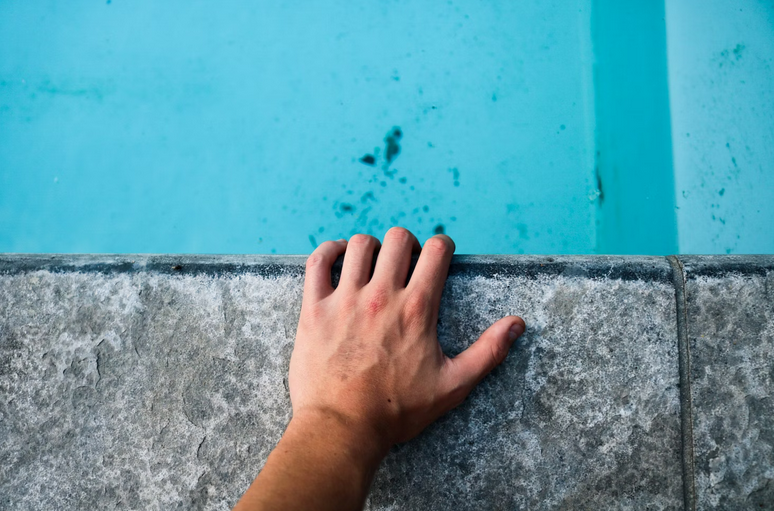For many, this is a topic that often gets overlooked – the importance of regular tile cleaning. While it may seem like a small task in the grand scheme of pool care, neglecting your regular pool tile cleaning can lead to some serious consequences.
From stubborn stains and mineral buildup to surface deterioration and dreaded algae growth, skipping out on proper pool tile cleaning can turn your backyard oasis into an unsightly nightmare. So, let’s explore what can happen when you ignore those tiles for too long. Trust us, you don’t want to miss this.
Accumulation of Stubborn Stains

Imagine you’re lounging by your pool, enjoying the warm sunshine and feeling refreshed as you dip your toes into the crystal-clear water. But wait, what’s that? Unsightly stains marring the beauty of your pool tiles? Unfortunately, this is a common occurrence when regular cleaning and maintenance are neglected.
Over time, dirt, debris, and even chemical residues can accumulate on your pool tiles. These substances can leave stubborn stains that are not only unattractive but also difficult to remove. Whether it’s rust stains from metal objects or mineral deposits from hard water, these blemishes can become an eyesore in an otherwise pristine setting.
What makes these stains so challenging to deal with is their tendency to stick around despite our best efforts. Basic scrubbing may not be enough to eliminate them fully. In some cases, harsh chemicals or specialized tile cleaning solutions may be required to restore the original luster of your tiles.
Calcium and Mineral Buildup

Calcium and mineral buildup in your pool tiles can be a major headache if left unchecked. Over time, the minerals present in your water can start to accumulate on the surface of the tiles, creating a stubborn white or grayish film that is difficult to remove.
This buildup not only looks super unsightly but can also affect the overall chemical health of your pool. The calcium deposits can create rough patches on the tile surface, making it easier for algae and bacteria to cling to them. This can result in a higher chance of algae growth and potential water contamination.
Surface Deterioration
Moreover, over time, the constant exposure to water and chemicals can take a toll on your pool tiles, causing them to deteriorate. When dirt and debris are left sitting on the surface of the tiles for extended periods, they can gradually erode the protective layer that keeps them looking clean and new.
As this layer wears off, the tiles become more susceptible to damage from stains, discoloration, and even cracks. Additionally, the algae we’ve just talked about can also contribute to further surface deterioration. The growth of algae or moss creates a moist environment that weakens the structural integrity of your pool tiles over time.
Algae Growth

As mentioned, it can also lead to uncontrolled algae growth. Algae thrive in warm, stagnant water, and they can quickly dominate and take over your pool if left unchecked. When algae start to grow on your pool tiles, it not only looks unsightly but also poses a health risk. Algae can make the surface slippery, increasing the chances of slips and falls. Additionally, certain types of algae can cause skin irritation and respiratory issues if swimmers come into contact with them.
Moreover, once algae begin to multiply in your pool, they become more difficult to eliminate. They can spread rapidly throughout the water and attach themselves to various surfaces, including your tiles. This makes thorough cleaning even more challenging.
To avoid all these potential headaches and expenses, be sure to set up a regular schedule for cleaning and maintaining your pool tiles. Regular brushing, scrubbing with appropriate cleaners, removing debris promptly, and balancing chemical levels – these practices will help keep your pool looking its best while minimizing long-term damage.

